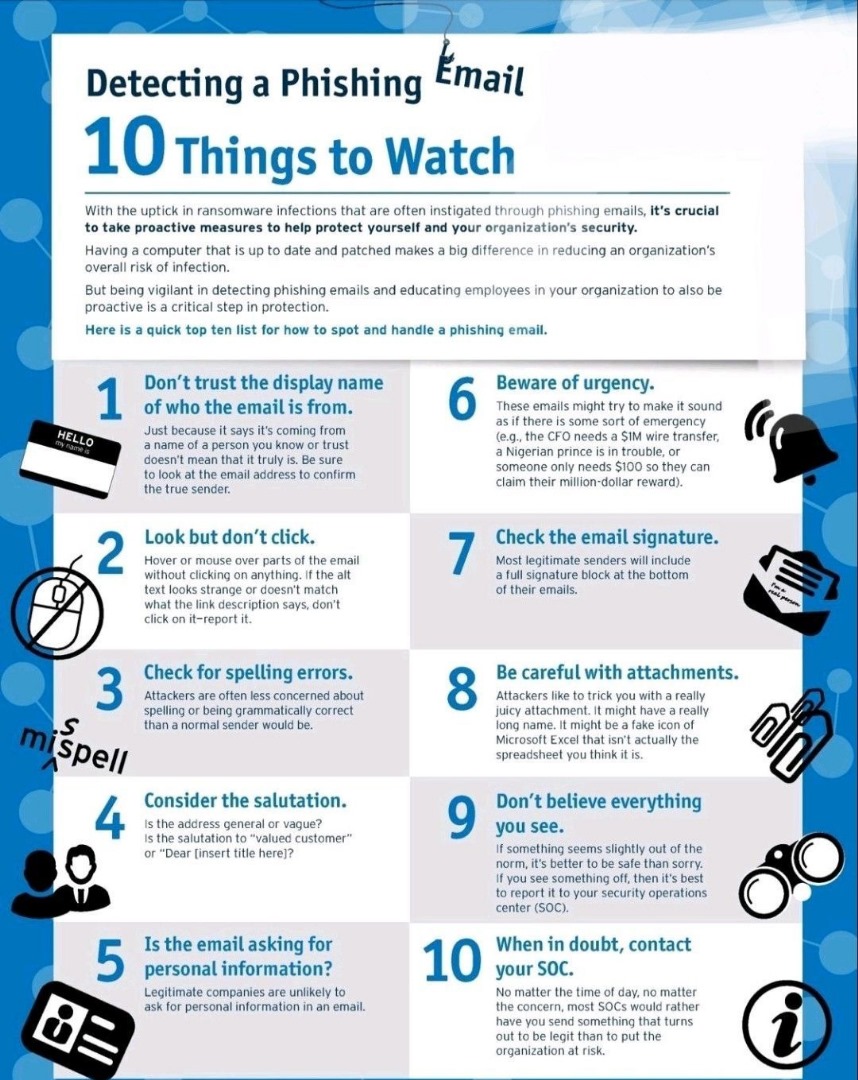1) Don’t trust the display name of who the email is from.
Just because it says it’s coming from a name of a person you know or trust doesn’t mean that it truly is. Be sure look at the email address to confirm the true sender.
2) Look but don’t click.
Hover or mouse over parts of the email without clicking on anything. If the alt text looks strange or doesn’t match
what the link description says, don’t click on it-report it.
3) Check for spelling errors.
Attackers are often less concerned about spelling or being grammatically correct than a normal sender would be.
4) Consider the salutation.
Is the address general or vague? Is the salutation to “valued customer” or “Dear [insert title here]?
5) Is the email asking for personal information?
Legitimate companies are unlikely to ask for personal information in an email.
6) Beware of urgency.
These emails might try to make it sound as if there Is some sort of emergency (e.g. the CFO needs a $IM wire transfer,
a Nigerian prince is in trouble, or someone only needs $100 so they can claim their million-dollar reward).
7) Check the email signature.
Most legitimate senders will include a full signature block at the bottom of their emails.
8) Be careful with attachments.
Attackers like to trick you with a really juicy attachment. It might have a really long name. It might be a fake icon of
Microsoft Excel that isn’t actually the spreadsheet you think it is.
9) Don’t believe everything you see.
If something seems slightly out of the norm, it’s better to be safe than sorry. If you see something off, then it’s best
to report it to your security operations center (SOC).
10) When in doubt, contact your SOC.
No matter the time of day, no matter the concern, most SOCs would rather have you send something that turns
out to be legit than to put the organization at risk.
